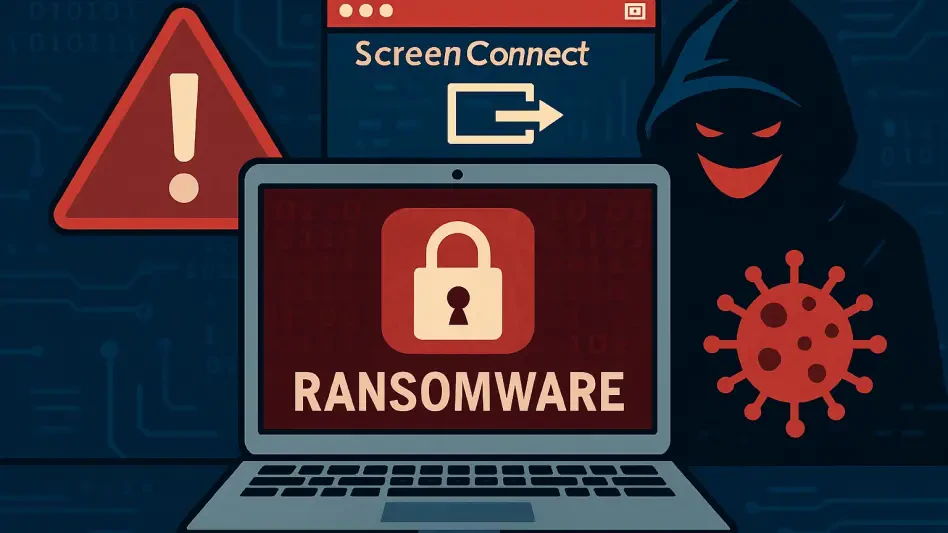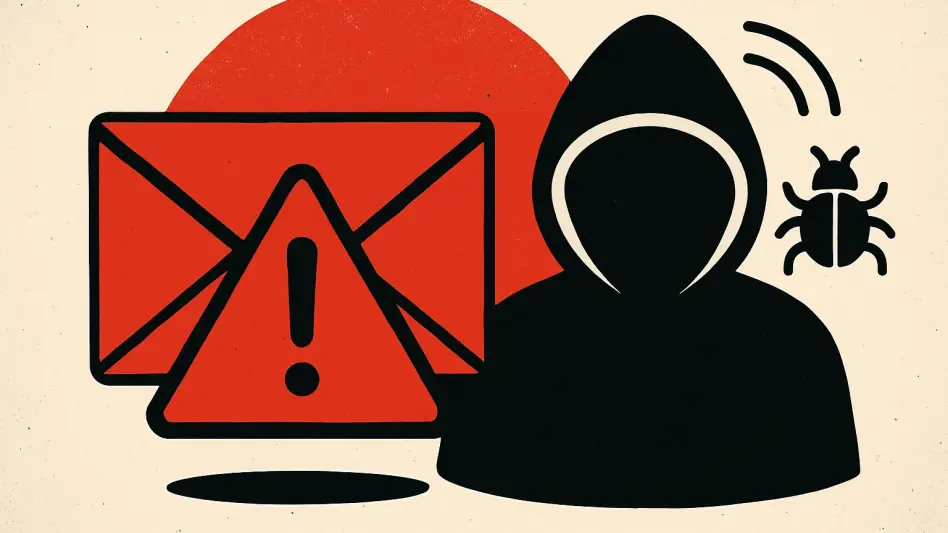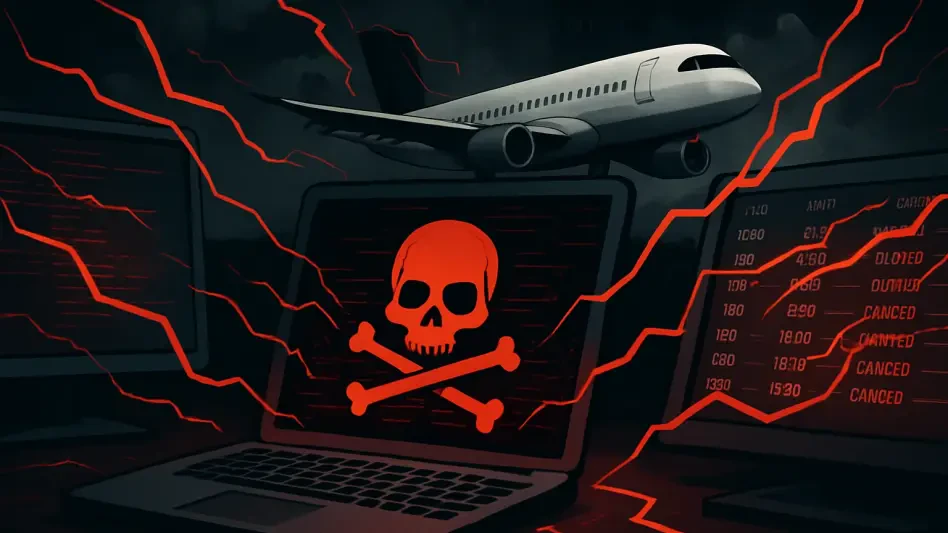In the ever-evolving landscape of cybersecurity threats, a disturbing trend has emerged that places a specific group of IT professionals directly in the crosshairs of malicious actors, particularly ScreenConnect administrators with Super Admin privileges. These individuals are being targeted in a sophisticated spear-phishing campaign designed to steal credentials and bypass security measures. This remote support and access solution, widely used by IT departments and managed service providers (MSPs), has become a gateway for potential ransomware attacks. The implications are severe, as attackers aim to exploit the extensive control these admins have over organizational networks. With the ability to deploy malicious clients or instances to countless endpoints, the risk of widespread network compromise looms large. This alarming development raises critical questions about the security of privileged access and the broader impact on businesses relying on such tools for remote operations.
Unveiling the Spear-Phishing Threat
A meticulously crafted spear-phishing campaign has surfaced, zeroing in on ScreenConnect cloud administrators across diverse industries and regions. These low-volume attacks utilize emails sent through platforms like Amazon Simple Email Service, cleverly disguised as legitimate alerts about suspicious login activities. The messages target senior IT professionals with elevated access, luring them to click on links that lead to counterfeit login portals. These fake pages, often created using the open-source EvilGinx framework, mimic the branding of ConnectWise and ScreenConnect to deceive even the most vigilant users. Once credentials and multi-factor authentication (MFA) tokens are entered, attackers intercept this data through a reverse proxy mechanism, effectively sidestepping MFA protections. The precision of these attacks highlights a growing sophistication in social engineering tactics, where the focus is not on mass distribution but on high-value targets with the potential to unlock extensive network access.
The consequences of falling victim to such a scheme are far-reaching and deeply concerning for organizations worldwide. Beyond the immediate theft of login credentials, the use of intercepted session cookies allows attackers to maintain persistent access, even in the face of robust security protocols. For Super Admins, whose accounts grant full control over ScreenConnect deployments, this breach can serve as a launching pad for further malicious activities. The ability to manipulate configurations or distribute harmful software to connected endpoints poses a direct threat to the integrity of entire IT infrastructures. MSPs, in particular, face heightened risks due to their role as connectors to multiple client organizations, amplifying the potential scale of damage from a single compromised account. This targeted approach underscores the urgent need for specialized defenses tailored to protect those with the highest levels of access within critical systems.
The Ransomware Connection and Broader Risks
Research has uncovered a chilling link between these phishing efforts and ransomware operations, painting a grim picture of the potential fallout. Cybersecurity experts have noted similarities between this campaign and activities associated with Qilin ransomware affiliates, suggesting that stolen ScreenConnect credentials may serve as initial entry points for deploying ransomware across networks. With Super Admin access, attackers can rapidly move laterally, infecting numerous endpoints by pushing out malicious clients or altering configurations. This capability transforms a single breach into a cascading disaster, especially for MSPs whose interconnected client bases provide a fertile ground for widespread attacks. The strategic targeting of privileged users in IT infrastructure reveals a calculated effort to maximize impact, where the end goal is not just data theft but the complete disruption of business operations through ransomware.
The broader implications of this threat extend beyond immediate financial losses or data breaches, touching on the very foundation of trust in remote access tools. As organizations increasingly rely on solutions like ScreenConnect for operational efficiency, the exploitation of these platforms by cybercriminals erodes confidence in digital infrastructure. The dual danger of credential theft and subsequent network compromise illustrates the nuanced challenges faced by IT teams in safeguarding sensitive access points. Attackers leveraging technical tools like EvilGinx alongside deceptive social engineering tactics demonstrate a hybrid approach that is difficult to counter with traditional security measures alone. This evolving threat landscape demands a reevaluation of how privileged access is managed and protected, particularly for roles that wield significant control over organizational systems, ensuring that vulnerabilities are not exploited at scale.
Strategies for Defense and Mitigation
To combat this insidious threat, organizations must adopt a multi-layered approach to cybersecurity that prioritizes the protection of privileged users like ScreenConnect admins. Specialized training programs focused on recognizing phishing attempts themed around remote access tools are essential. IT staff should be equipped to identify subtle red flags in emails, such as unusual sender addresses or urgent language designed to provoke immediate action. Additionally, enforcing conditional access policies can restrict admin logins to organization-managed devices, reducing the risk of compromise from personal or unsecured endpoints. Implementing phishing-resistant MFA methods further fortifies defenses by making stolen credentials alone insufficient for access. These proactive steps are critical in building a resilient frontline against targeted attacks that prey on human error and trust in familiar branding.
Beyond training and access controls, continuous monitoring and detailed logging of authentication and administrative activities are vital for early detection of suspicious behavior. Organizations should establish systems to track actions such as unauthorized client deployments or unexpected configuration changes, which could signal a breach. Regular audits of admin accounts and their permissions can help identify potential weaknesses before they are exploited. By maintaining a vigilant stance, businesses can mitigate the damage of a successful phishing attempt, limiting an attacker’s ability to escalate privileges or spread malware. Reflecting on past responses to similar threats, it became evident that a combination of technical safeguards and user awareness was instrumental in curbing the impact. Moving forward, adopting these strategies will be key to safeguarding critical IT infrastructure against the evolving tactics of cybercriminals aiming to exploit trusted remote access solutions.








